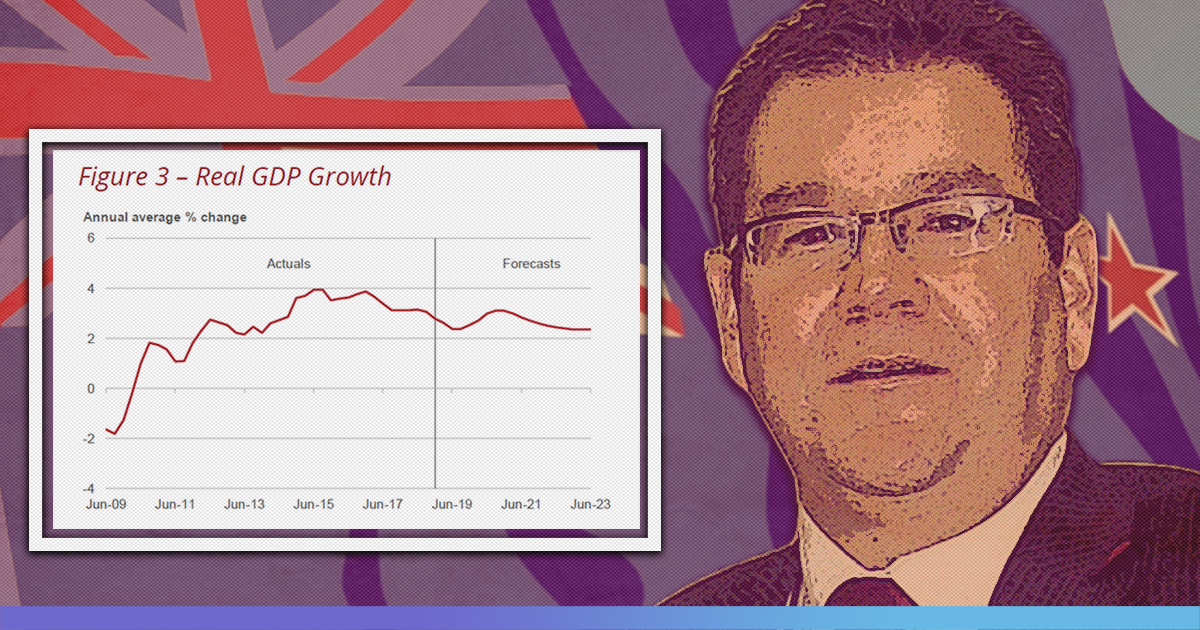In a welcome move, the New Zealand government bid goodbye to GDP as an indicator for its progress and the well-being of its citizens. Moving away from the idea that financial prosperity alone is a sufficient measure for the quality of life, the Jacinda Ardern led government introduced a new “Living Standards Framework”.
The new framework “…builds on more than 30 years of New Zealand and international research and evidence on wellbeing, including a range of public feedback and domestic and international expert advice.”

World Economic Forum
The budget
Recently the Finance Minister of New Zealand, Grant Robertson, unveiled the second budget of the present Coalition Government. He called it the first Wellbeing Budget for New Zealand.
Outlining the ideology of the government to tackle the issues that New Zealand’s citizens are facing he said, “[the budget] shows a government that is not satisfied with the status quo… the things that New Zealanders valued were not being sufficiently valued by the government. And because they were not being valued, they were not being measured, and because they were not being measured, they were not being done”
“So, today in this first Wellbeing Budget, we are measuring and focussing on what New Zealanders value – the health of our people and our environment, the strengths of our communities and the prosperity of our nation. Success is making New Zealand both a great place to make a living and a great place to make a life,” Robertson said.

The Wellbeing Budget
The wellbeing approach
The budget defines wellbeing as, “… when people are able to lead fulfilling lives with purpose, balance, and meaning to them.” and highlighting the fact that financial prosperity alone is not the way in which that can be achieved it says, “Sustainable economic growth is an important contributor, but many factors determine people’s wellbeing. Just because a country is doing well economically does not mean all of its people are. This has been the case for New Zealand. Too many people have been left behind or left out.”
Three ways are elaborate on how the budget tackles complex problems like child poverty, inequality, and climate change in a meaningful manner:
- “Breaking down agency silos and working across government to assess, develop and implement policies that improve wellbeing”
- “Focusing on outcomes that meet the needs of present generations at the same time as thinking about the long-term impacts for future generations”
- “Tracking our progress with broader measures of success, including the health of our finances, natural resources, people and communities”

The Wellbeing Budget
Moving away from GDP
In their 2010 book, “Mismeasuring Our Lives”, celebrated economists Amartya Sen, Joseph Stiglitz, and Jean-Paul Fitoussi offered an assessment of the limits of GDP as a measure for the wellbeing of societies. Among many other limitations, they highlighted how, “… GDP overlooks economic inequality (with the result that most people can be worse off even though average income is increasing), and does not factor environmental impacts into economic decisions.”
They exhorted for a more nuanced approach towards tackling the growth of a people and offered suggestions on how to move ahead of GDP towards more holistic methods for measuring wellbeing.
Realizing the same, the Wellbeing budget does away with GDP and uses the new “Living Standards Framework” (LSF) developed by the Treasury of the New Zealand Government.
According to the Treasury’s website, “The LSF is a framework on intergenerational wellbeing spanning a broad range of economic, social, and environmental outcome domains at a high level.”
The three main elements considered in its formulation are the domain of current wellbeing; the capitals that combine to generate current and future wellbeing; and, risk and resilience.

treasury.govt.nz
The LSF draws upon more than thirty years of national and international research and continues to evolve as new frontiers are explored in what constitutes a person’s wellbeing. Already it factors more than 60 indicators and broadly classifies them into four broad domains. No other government, except Bhutan (which measures its growth in terms of Gross National Happiness, that factors happiness over nine domains), has developed its policies on such an extensive body of research.

treasury.govt.nz

gnhc.gov.bt
The way ahead
During his budget speech, Grant Robertson said, “…the Wellbeing Budget is about a new approach to tackling New Zealand’s long-term challenges. We do not claim perfection on this first attempt. But we do believe that this Budget represents a significant step forward.”
“Our priorities are clear:
- Taking mental health seriously;
- Breaking the cycle on child poverty and domestic violence;
- Supporting Māori and Pasifika aspirations;
- Investing in crucial national infrastructure, like building new hospitals and schools; while
- Managing the books responsibly; and
- Addressing long-term economic challenges such as building a sustainable economy and preparing for the jobs of the future.”
Commenting on the future of the budget and its execution he made it clear that, “… this budget is just one step in a long process of reforms.”
Also Read: India Becomes World’s Sixth-Largest Economy In Terms Of GDP: Know What It Means











